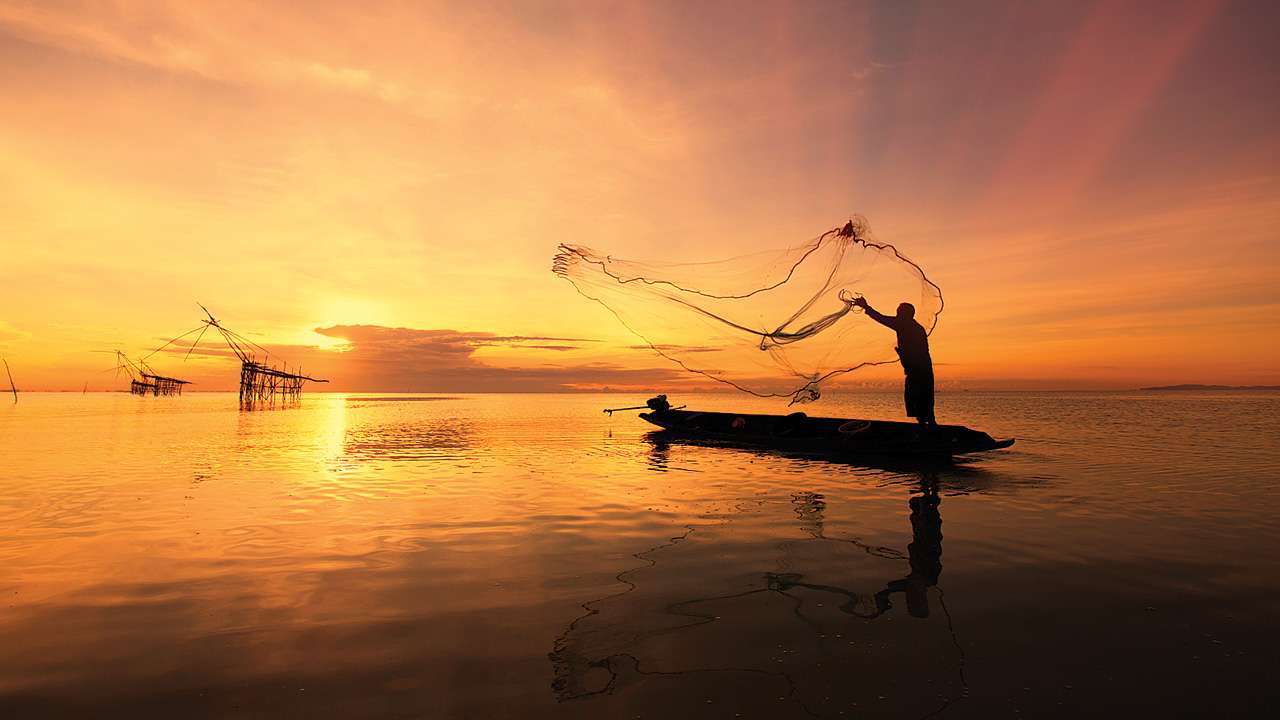
In a world of extraordinary change, oceans are the canary in the coal mine. Tracking aquatic shifts from the perspective of the sentinels of the sea, the fishermen, is one component of the programme that I co-founded; InSeason Fish.
InSeason Fish was created to promote the idea that seafood eaters in India can help support the development and maintenance of sustainable fisheries.
Sustainability of fisheries is a difficult concept to define in specific terms. In some developed countries, sustainability means counting all the fish in the sea and identifying a maximum number that can be caught in any year, such that the rest of the fish can repopulate the ocean.
This requires a huge allocation of time, effort, manpower and expense to monitoring both the ocean and how much fish is being caught.
Tropical countries, like India, often cannot afford such an intensive exercise, not merely because of the expenses, but also because our marine ecosystems are quite different from those of temperate countries.
India’s coastline is dotted with mangroves, hard coral reefs, soft corals, oyster banks, seagrass meadows, sandy seabeds, muddy banks, even rocky cliffs on the ocean floor.
Our seas are warm on the surface, but can become frigid at depths of 1 km or more. Therefore, our marine environment abounds with hundreds of different life forms jostling for space.
We may not have enormous quantities of any one species, but we have sufficient quantities of a large number of species. This is why fishing methods are also diverse.
Within this context, monitoring the ocean and every fish being caught takes on a different hue, becoming a gargantuan task that would involve surveillance of every inch of our 7,000-km coastline.
In the absence of constant supervision, India’s fisheries have become one of the biggest and most immediate threats to marine life in the country.
Fishing is particularly maligned for the types of fishing hooks and nets, collectively called fishing gear, that are indiscriminate. They just as easily catch dolphins, seabirds and sharks, as they catch seer fish, tuna and mackerels.
Sharks are a particularly easy target, given their propensity to take bait and get attracted by the scent of blood. As the second largest harvester of sharks in the world, India has been under a lot of international pressure to clamp down on shark fishing.
However, this is easier said than done. Sharks are not usually specifically targeted, but given the indiscriminate nature of fishing gear, they are merely one of the many cash cows amidst the hundred or so species that are caught in fishing gear across the Indian coast every day.
Sustainable fisheries, in this context, has to be a much less quantitative phenomenon. Across the tropics, fishermen have repeatedly suggested that a holistic approach is the only way forward for bio-diverse fisheries.
Science has interpreted this suggestion as a strategy called ecosystem-based management.
Managing an ecosystem rather than a species, has many implications. First, it suggests that numbers play a secondary role. Instead, one could focus on what is being caught, how it is caught and the way it is utilised.
Consequently, fishermen in several parts of India have developed rules about what types of fishing gear to use, when to fish and where to fish in certain seasons of the year.
These fishermen explicitly identify some types of fishing gear as being bad for the ecosystem. Large-scale fishing and fishing gear that require huge capital investment, or which concentrate income and power, are viewed negatively. The consequence of one fisherman using that method will be that all fishermen (in the long run) will have to use the method to compete. The price, of this arms race, will be borne by the ecosystem.
Sustainable fisheries, therefore, involves cooperation where fishermen work together for the benefit of their livelihood, rather than themselves.
Yet fishermen’s cooperation has its limits. Fish, after all, are wild animals that live and move by the vagaries of their environment. Cooperative fishing that is circumscribed by rules of how, where and when to fish, produce a very different type of fish market than the one seafood eaters are used to seeing.
Examples of this are strewn about our coastline, in the many fishing villages that supply only to locals. Seafood in these markets is extremely diverse, featuring at the very minimum around 50 species of fish, crabs, mussels, squids and other invertebrates.
A buyer also cannot expect to see the same set of species through the year. The market would actually reflect natural seasonality and migrations of marine life. Sustainable fisheries therefore, require supportive markets.
Over the past year, InSeason Fish has taken these ideas of sustainability from coast to coast. During these travels, seafood lovers have often asked if there was any fish that was the golden ticket, which could be sustainably eaten. A holistic view of sustainability, however, precludes such one-stop solutions.
Instead the focus should be on understanding the process and increasing transparency of supply chains.
Therefore, sustainability for Indian fisheries can be met with our triple goals — ‘Eat Diverse, Eat Seasonal and Source from Sustainable Fishermen’.
Expert nutritionists like Rujuta Diwekar, endorse this perspective on food, suggesting that setting aside time to understand where and how your food is produced, can go a long way in creating better health for oneself and family in the long run.
InSeason Fish’s work suggests that this can also create better health for the ocean. If ever there was a win-win situation, this is it!
Author, from Ashoka University, is the first Indian woman to receive the Future of Nature Award. She is co-founder of InSeason Fish